Blogging About Your Hobby (FAQs series)
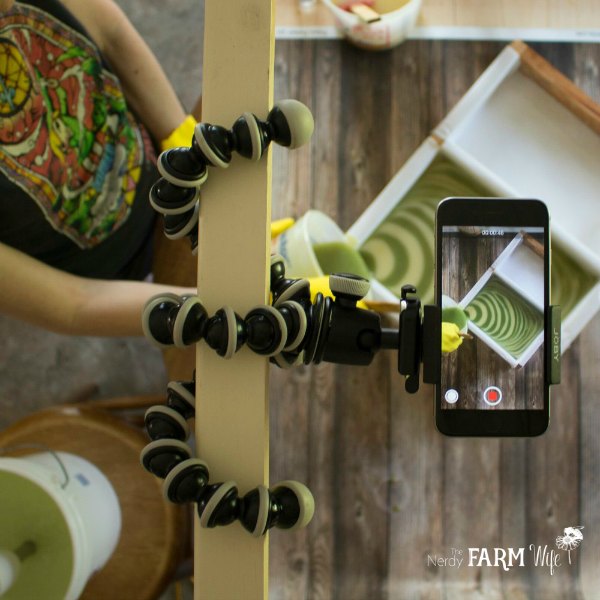
A few years back, I wrote a blog post about Selling Handmade Products, where I covered some of the most frequently asked questions I received on the topic.
In it, I mentioned that I’d personally stopped selling handmade items because blogging was more profitable and less labor intensive, which resulted in a lot of emails and questions, and me promising multiple people a follow-up post on blogging.
Though it’s a couple of years late – today I finally have that post ready!
Being able to stay home and earn a full-time income writing about your favorite hobby, or hobbies, is a dream shared by many, but the getting there takes knowledge, time, hard work and commitment.
In this blog post, I’ll share many of the things I’ve learned along the way that’s enabled me to provide a full-time income for my family.
To make it easier to navigate, it’s broken into five sections:
- Starting your site, then getting it up and running
- Creating content for your site
- Getting people to visit your site
- Earning money from your site
- General resources & final tips
* Some links on this site are affiliate links. That means if you click on one and make a purchase, I’ll earn a small commission for sending a customer their way. I only recommend companies and products that I’ve personally used and have had good experiences with. Thanks for your support!
Section 1: Starting your site, then getting it up and running
What should I call my blog and how do I claim the name?
This part can take a while to figure out! I originally called my blog Honey Bee Hill Farm, because that’s what we’ve called our place and homeschool for many years, but I wasn’t completely happy with it.
One night, I suddenly woke up with the thought that I should rename my site “The Nerdy Farm Wife”. I got up and wrote it down before I forgot, then went back to sleep. The next day, I did an internet search, saw no one was using it and bought the domain name. That one random thought gave me a memorable name that gets chuckles and comments every time I talk to someone about it.
Before you commit to a name, do an internet search on it and make sure no one else is already using it. You also don’t want to choose anything too similar to a well known brand or business.
NameCheap is a popular place to buy domain names.
Who is the best blog host?
Opinions are going to vary widely, but choose carefully here! Most how-to-blog articles, ebooks and programs are going to push you towards BlueHost, or maybe HostGator. This isn’t because they personally use them or because they’re the best, but it’s usually because they pay out big bucks for referrals. Please read THIS ARTICLE before choosing a hosting company.
Wondering who I use for The Nerdy Farm Wife? That would be Big Scoots.
What’s WordPress and how do I install it on my site?
When it comes to actually setting up your website, things start to get techy. It might seem overwhelming, especially if you’re not computer-savvy. Don’t worry, I’m going to point you to three trustworthy experts who will help guide you through this part!
When I started my blog, I used tutorials provided by Crystal Paine at Money Saving Mom and Amy Lynn Andrews and I still highly recommend their sites.
iMark Interactive also has some great resources, such as THIS GUIDE on How to Start a WordPress Blog, or if you just don’t want to fool with the technical aspects at all, you can get them to handle the whole setup for you. (iMark Interactive keeps my site up to date and running smoothly – they’re awesome at what they do!)
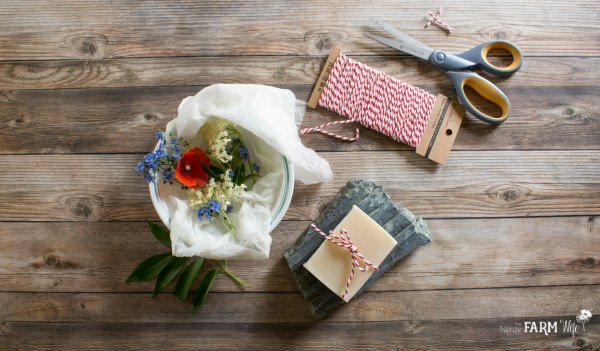
Section 2: Creating content for your website
What should I write about?
Think about the things you love and that you’re passionate about; those topics that you could talk on and on and on about and never get tired of learning new aspects of. From there, narrow that list down to just a couple things that you can see yourself writing about for a long time to come.
After that, think about those ideas some more in the context of how you can use your passions and knowledge to offer value to the people who visit your site or help solve their problems. Writing an amusing-to-you anecdote about how your dog Fluffy likes to chase squirrels isn’t going to draw a lot of attention (except maybe from animal rights activists worried about the squirrels.) However, sharing how you made your dog Fluffy a cute Christmas sweater, complete with photos and step-by-step instructions OR sharing a list of tips or a review of a resource you used to train Fluffy to stop chasing those squirrels in the first place could be super useful to others.
Another tip is to think about the audience you want to attract. For example, if you want to write about frugal living, keep in mind that you’re going to attract a frugal crowd who isn’t going to be able to spend a lot of money on your digital products or affiliate links, and that will affect your monetization strategy. (I’ll talk more about this in Section 4: Earning money from your blog.)
Everyone and their mom, sister, and grandma has a blog now, how can I make mine stand out?
That’s one of those million dollar questions that everyone wants to know. The best advice I can give you is that perseverance helps win the game.
Yes, tons of people start blogs every day, but then they realize that it’s harder than it looks so they give up on it too soon. Just sticking it out year after year will go a long ways to getting you where you want to be.
In addition, focus on quality over quantity and offer valuable content, recipes, tutorials and how-to’s that have been thoroughly tested, coupled with good photography.
How can I take better photos for my website? (Also related – What kind of camera do you use?)
I’ll start by answering the camera question first. I currently use a Canon EOS Rebel SL1.
However, you don’t necessarily need a super fancy camera. I’ve seen some nice sites where the photos are all taken with an iPhone. A good camera definitely helps though.
My best tip for taking better photos is to use natural light – keep the flash off. Look for indirect soft light that’s diffused through a window and avoid the harsh overhead rays of midday sunlight.
After I started writing this section, I realized that photography was too big of a topic to cram into this blog post and that it needs a space of its own. (If there’s enough interest, I’ll make that the next installment in my FAQS series!)
A few more content creation tips:
You’ll often see the saying: “The riches are in the niches.” I found this to be absolutely true. It wasn’t until I narrowed down the focus of my blog to just a few select topics that I started earning more serious money.
Don’t try to write for everyone or try to cover too broad of a theme. For example, “how to make baked goods” is a huge area of interest. “How to make gluten free baked goods” has a narrower focus which is better, but you could niche down even further to something like “how to make kid friendly gluten free baked goods.”
Don’t compare yourself to others. If you feel intimidated or discouraged by visiting other sites in your niche, stop following them. I follow very few sites in my niche, and those are only for the purpose of having great content to share on Pinterest. Spending all of your time fretting about what someone else is doing on their website won’t help you build your own.
Special note for those who sell products:
If you sell handmade cosmetic products such as soaps, salves, lip balms, lotions, and so forth, you have to be especially careful about what you write about on your site, and even what you share on social media platforms.
Please read this article “A Surprise Visit from the FDA” over at the Soap Queen to learn more.
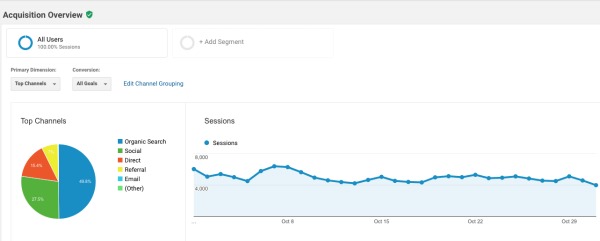
Section 3: Getting people to visit your site
When I first started, I had exactly two readers visit my site and they were my sisters. (Thanks sisters!) :) Occasionally a few friends on Facebook would visit and leave a comment, but otherwise – crickets.
So, how do you get people to find your blog?
Two effective things I did early on to get traffic to my site was participating in blog hops (also called link parties) and share threads in Facebook blogger groups.
What’s a blog hop?
A blog hop (or link party) is essentially a collection of links, usually centered around a theme or topic. You share your latest blog post in the “linky” then go visit some of the other links that were submitted. These are no longer recommended as best practice.
What’s a Facebook blogger group and a share thread?
Facebook blogger groups are comprised of a group of bloggers in the same niche. Many of them have a weekly (or sometimes daily) share thread, where you leave your latest blog post in the comments for others to share, and in return, you share several others from the thread.
I discovered my first blogging groups through a couple of bloggers that dropped by my site from blog hops (link parties). As your blog grows, your list of contacts and group options will grow too.
To get started from scratch, you can go to Facebook and do a search on “blogging group” or “blogging share group“.
What about leaving lots of comments on other people’s sites?
This tactic was recommended to me early on, but I just didn’t find it helpful, plus it feels a little disingenuous to me, unless you planned on leaving a thoughtful comment in the first place. It takes up valuable time to leave comments on multiple sites, just for the sake of hoping someone will visit you back, and most bigger bloggers are too busy to click over and see who left a comment on their site. However, just because it wasn’t for me, doesn’t mean that other bloggers haven’t found the strategy effective.
Other places to share your blog posts:
Facebook – You’ll need to set up a business page since using a personal page for business purposes is against Facebook’s terms of service.
- “How to Build a Facebook Page for Business” (a guide for beginners)
Pinterest – According to the company itself, “Pinterest is a visual bookmarking tool that helps you discover and save creative ideas.”
Pinterest is all about beautiful or eye-catching images. At the time of this writing, vertical pins are a must if you want other bloggers to share them on Pinterest, so for this reason I suggest you create a specific image for Pinterest for each blog post.
Instagram – Share photos of finished or in-progress blog projects along with behind-the-scenes peeks of what’s going on in your world. Be sure to utilize hashtags and engage with those who comment on your photos.
A drawback of Instagram is that you can’t include hyperlinks in your photo caption. Instead, I use Link In Profile so that I can send followers to a specific link.
A note about follower numbers:
I’ve seen so many bloggers get worked up when they lose a couple of followers from Facebook or another platform. This happens to all of us and there’s absolutely nothing you can do about it. People change their minds, interests and hobbies all the time. They might have started following you on another platform or they just might not be interested in what you have to say any longer.
Make a commitment now that you’re not going to waste valuable moments of your life obsessing over blog numbers and that you won’t take unfollows personally. I promise you’ll find blogging a lot more fun if you don’t sweat the small things!

Section 4: Earning money from your site
What’s the best way to earn income from a blog?
There’s no one right way to earn money from a website. What works for me, won’t necessarily work for you. However, I’ll cover the types of income streams I personally use in this section.
One thing I want to point out is that blogging isn’t easy instant money. I didn’t earn a penny until about 9 months after starting my blog, and then it was another year until I hit the $1,000/month mark.
Yes, I can sit at home and work in my yoga pants, but I’ve also worked straight through my birthday, Christmas Eve, and my 20th wedding anniversary before due to looming project deadlines. On the flip side, when time crunches aren’t a factor, I can take a whole day off just to enjoy the first pretty day in spring, or take a spur-of-the-moment trip with my kids.
Creating ebooks:
Creating my own digital products to sell was an absolute game changer for me. It’s a lot of up-front work, but once it’s done, it’s done (other than periodic updates).
There’s nothing like the feeling of checking your email and seeing that you sold an ebook while you were watching TV, or playing with your kids, or sleeping.
To create my first ebook, I downloaded Pat Flynn’s “Ebooks the Smart Way” and followed it to a T. It’s completely free, plus you get signed up to his newsletter which is also filled with all sorts of valuable advice. It’s a win-win decision!
Since that time, I moved from his recommended shopping cart provider, over to SendOwl instead. I like SendOwl better because is has an attractive interface, is so easy to use and I love that customers never have to leave my site to check out. There’s only one (very reasonable) monthly fee, and payments you receive get sent right to your PayPal and bank accounts. They also have a great setup if you want to recruit affiliates to promote your products.
Creating courses:
This summer I created my first course (Soapmaking Success) and have more in the planning stage. While the ebook market is pretty saturated, course creation is a less crowded field and offers a lot of opportunity for income growth.
I use Teachable as my course platform. It’s really easy to use and they have great customer service, plus tons of valuable resources to not only help you get started, but to also help you market your course and earn more income from it.
If you have a skill or hobby that you want to teach others, definitely check out Teachable and be sure to sign up for their upcoming summit “How to Launch Your Profitable Online Course & Business.”
Affiliate programs:
Some businesses have affiliate programs that you can join. Once you sign up and are approved, you’ll get special links that you can include in blog posts. When someone clicks on that link and makes a purchase, you’ll get a small commission for sending a customer their way. Different affiliate programs have different rules so be sure to review their terms of use. When writing a blog post with affiliate links, be sure to first mention that the post includes affiliate links.
I use Pretty Link Lite (a free plugin) to make affiliate links match my site and to keep track of how many times one has been clicked. It also has an option to make a link nofollow, which is important to Google. Don’t use this plugin for Amazon, as cloaking their affiliate links is against their rules.
Amazon is my best source of affiliate income, but to find other affiliate programs to join, I do a Google search on the name of a company or product I like along with the words “affiliate program.” I always start with products that I already like and use; I don’t just randomly link to something that I’ve never tried before. Sometimes a favorite resource won’t have an affiliate program and that’s okay – it’s still nice to link to them!
Putting ads on your site:
When my blog was in its early years, I had Google Adsense ads on it. I wasn’t a huge fan of them to start with, but then one week they kept putting RoundUp ads on my dandelion flower posts. (!!) That led me to the decision to remove ads from my site for several years.
These days, I have two teenagers plus two vehicles that are 20+ years old & in serious need of replacing, so I’ve returned to using ads. Mine are provided by AdThrive and they are an awesome company to work with!
Sponsored content:
This is something I haven’t really explored yet. For a few helpful links about working with sponsors, check out:
- “Where to Find Sponsored Posts Opportunities” (a master list)
- the sponsored posts archives at Jenny Melrose
A sidenote about free stuff from companies:
Some companies will trade you free product in the hopes that you’ll write a positive review for them. While no money exchanges hands, in the eyes of the IRS, this free stuff counts as compensation.
Speaking of the IRS and taxes….
Don’t forget that you’ll owe taxes on money made from your blog. When you reach a certain threshold, you may need to start making quarterly estimate payments. This is outside the scope of any advice I can offer and I highly recommend the professional guidance of a qualified accountant or CPA. These two articles may also help get you started in the right direction:
Streams of income:
There are all sorts of potential sources of income when it comes to blogging. Continually build and assess your revenue streams to make sure you’re not completely dependent on just one of them for the bulk of your income, because things can change quickly in the online world.
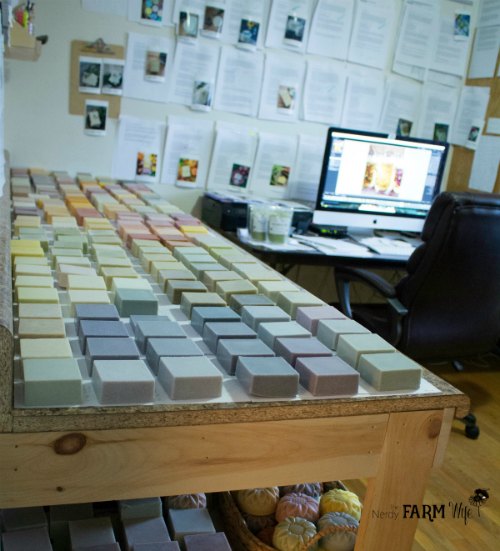
Section 5: General resources & final tips
There are thousands upon thousands of noisy voices in the blogging advice world, all vying for our attention and wallets. Resist the urge to sign up for all the things! Below is my list of the best of the best people to follow.
- Paul Jarvis – His Sunday Dispatches newsletter is smart, interesting, witty and often makes me rethink everything I’m doing. (That’s a good thing.)
- Amy Lynn Andrews – Her weekly Useletter® is a tidy and easy to read collection of tips, tools and the latest news for bloggers and freelancers.
- Regina Anaejionu – Her website is absolutely loaded with valuable content for infopreneurs. Be sure to check out the Humans of Online Business Facebook group too.
- Nick Stephenson – If you’re an author or have aspirations of becoming one, you should definitely check this guy out. He’s hilarious and every email is a master example of exceptional storytelling skills.
- Pat Flynn – Founder of the quintessential Smart Passive Income Blog, you’ll find all sorts of inspiration and information on his site and podcast.
- Darren Rowse – I found ProBlogger helpful when I was a newbie, and still find it helpful now that I’m a professional blogger myself. There’s something for everyone on this site!
While I could probably keep talking all day about blogging, this post is getting quite long! So in parting, I have three final tips to share, gleaned from lessons learned the hard way:
Always back up your blog in an offsite location.
A couple of years ago, my site went down on Christmas Day and stayed down well into January. I lost almost half a month of income. (If you’re wondering, my blog host at the time was A Small Orange, a company I used to love, but can no longer recommend.) If I had only backed up my site as my friend, Larry Deane of Side Income Blogging, recommended, I could’ve switched hosts and been up and running within a day with very little disruption to our income.
Start building your email list ASAP.
For a long while, I just didn’t see the importance of building an email list, so I didn’t bother with one. This was a huge mistake. Especially in these days of dwindling social media reach, a newsletter is one of the best ways to stay in touch with your readers and is pivotal in earning income from your site.
- “61 Actionable List Building Strategies (That Actually Work)”
- “How to Build an Email List: 85 List Building Strategies”
- “How to Start an Email List”
Don’t let your blog consume your life.
The main reason I started blogging in the first place was as an attempt to break my addiction to an MMO (massively multiplayer online game).
On the plus side, it worked! On the downside, blogging shares a defining characteristic of an MMO – it has no end point.
No matter how much you work on your to-do list, you’ll wake up tomorrow and find more things to add to it. The emails, comments and questions grow as your site grows and can become overwhelming to keep up with. As your writing and photography improve, you’ll feel the urge to continually update and improve your older blog posts. Your attention will be pulled in a million directions by shiny objects and the fear of missing out syndrome. It can feel like you’re fighting a losing battle, trying to keep up with everything that needs to be done.
Especially if you’re a completionist like me, it’s incredibly difficult to step away from your computer and turn off your blog brain for the night, but it’s essential for your health and happiness.
So my final bit of advice is to set blogging boundaries and stick to them. You don’t need to check your notifications every 5 minutes, you don’t have to document every fun activity or meal for Instagram, and very few emails are true emergencies that have to be answered that day. Make your blog work for you, and not the other way around. :)
And that wraps up the third installment in my FAQS series! Here are other FAQS posts, if you missed them:
- Selling Handmade Products
- How to Make Any Soap Recipe Palm Free
- How to Create Your Own Shave Soap Recipe
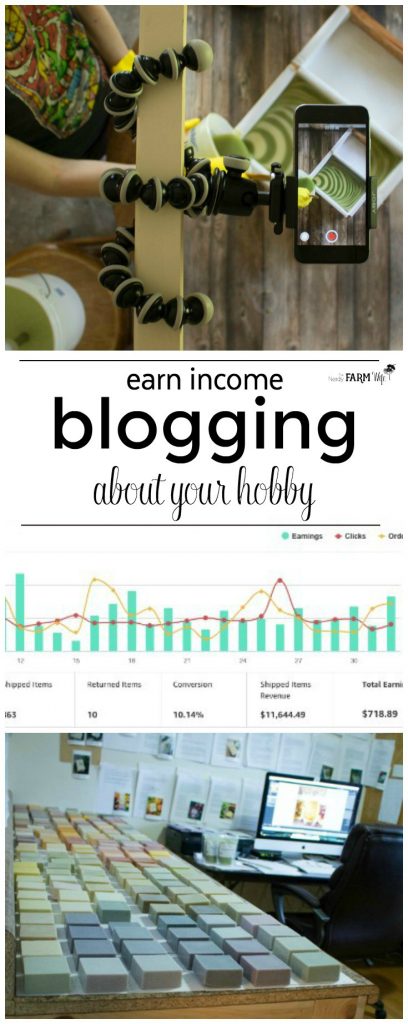


Great info, and timely too. I’m just about to get “back inside” after my market garden season. My blog has been sadly neglected and your post has given me the kick in the pants to get back at it. (Also a layer of snow on the ground hasn’t hurt in that regard either.) Thanks!
Hi Erin! I hope you enjoy working on your blog again & have a restful break from market garden season! :)
Although i’ll Never be a blogger, this was informative! (I don’t do Facebook, Twitter, or anything else.) I do make soap, though! Thanks!
Debbie
Hi Debbie! I’m glad you enjoyed reading! :)
Thankyou so much for writing this post. It has come at exactly the right time. And, I mean exactly. Just prior to reading this, I had just spend two hours trying to come up with a name for my blog. I then checked my email…and…here is your post, just waiting for me to read. So much awesomeness in all this information…thanks again. Sharon
Hi Sharon, I’m so happy you found the information helpful! Good luck with your blog! :)
Thank You for this post very very helpful !
Hi Debbie, I’m so happy to hear that you found it helpful! :)
great helpful post for bloggers…i have been running a blog from last 1 year..I would really like to follow your tips to increase my blog performance in future..thanks for such wonderful article..!!
Hi Arvind, Thanks for the kind words & glad you found it helpful!
Thank you Jan,
My blog has been stagnant for too long. I needed this post for inspiration. I write for my small farm life and our Home art business, and both need attention. Maybe these resources will help me combine the two somehow.
(PS I have been reading Paul Jarvis for a couple of years and love his attitude and ideas.)
Hi Julie, Isn’t Paul Jarvis the best?! I look forward to hearing from him each week & have so many old newsletters saved too, to read over when I need a little kick in the right direction. :)